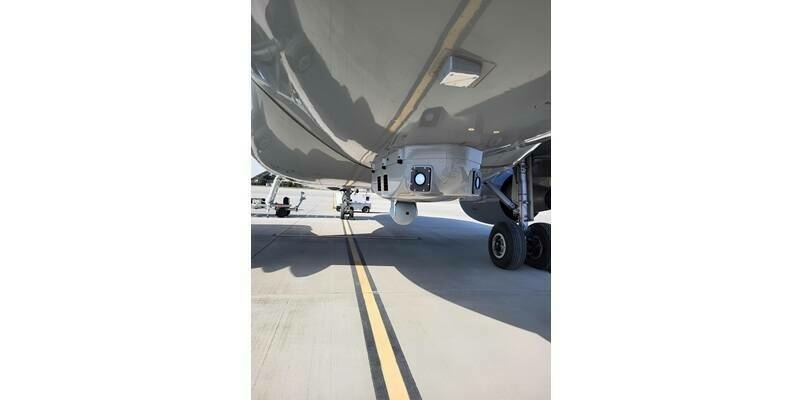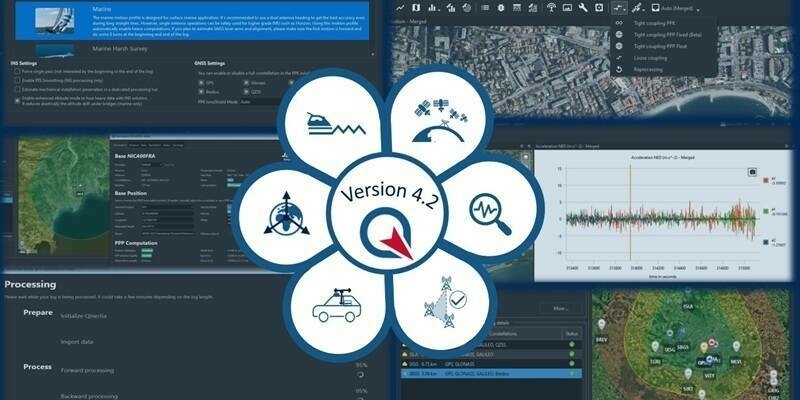In May, architecture, engineering, geospatial (AEG) and strategic consulting firm Woolpert was hired to complete right-of-way (ROW) and TMOSS design surveys in Castle Rock, Colorado using UAS.
The design and ROW plan surveys were to be conducted in accordance with Colorado Department of Transportation (CDOT) standards. TMOSS, which stands for InRoads Terrain Modeling Survey System, represents the best practices followed by CDOT surveyors and contract consultant surveyors.
Woolpert was contracted by Felsburg Holt & Ullevig (FHU), who planned to use the imagery and mapping collected by the UAS to assess and design a frontage road adjacent to Interstate 25, which runs through Castle Rock and Douglas County. The project team planned to evaluate and define ROW acquisition needs for the new road based off the design and ROW plans produced from the imagery and field surveys.
“This is a unique opportunity to introduce new technology to the town with a proven survey team,” Woolpert Project Manager Chris Raml said at the time.
“Using UAS will save the client time and money, and offer a superior, visual deliverable. We know what’s required by the town of Castle Rock and CDOT, and our drones are collecting exactly what’s needed safely and efficiently.”
For this project, Woolpert said that it would use senseFly's eBee X drone. Capable of extended flight times, the UAS is equipped with real-time kinematic (RTK) technology. When combined with Woolpert survey group’s ground control point data, this technology produces a highly accurate topographic base map and orthorectified imagery.
Woolpert has worked with CDOT for more than 20 years and with the town of Castle Rock for almost 10 years, providing transportation design surveys and ROW acquisition support services. According to FHU Senior Engineer Rick Erjavec, FHU hired Woolpert based on Woolpert's favorable reputation with Castle Rock for previous work completed, as well as for the firm's ability to tie into the same control used for an upcoming Crystal Valley interchange project.
A month before Woolpert announced that it was hired to complete ROW and TMOSS design surveys in Colorado, Woolpert was contracted by the Indiana Department of Transportation (INDOT) to develop a strategic plan and concept of operations for the state’s UAS program.
INDOT was to manage, share and align the policies, procedures and standards created by Woolpert with designated agencies throughout the state.
“INDOT wants to ensure that the state of Indiana is flying UAS safely and effectively,” said Thomas Mackie, Woolpert vice president and geospatial program director.
“People and organizations across the country are attempting to integrate drones into their business processes, due to the many benefits of this technology. But often these processes are inconsistent and untested, and therefore unsafe.”
Like CDOT, Woolpert had worked with INDOT, and had previously completed a contract with Indiana to acquire and process high-resolution orthoimagery and lidar data throughout the state as part of IndianaMap, which houses and shares the geospatial data and services of Indiana. The firm said at the time that the contract extends and complements its support of these technologies across the state.
Also possessing decades’ worth of transportation engineering and survey experience, Woolpert works directly with FAA regulatory leaders and provides strategic consulting services across several markets. In 2014, Woolpert became the first surveying and aerial mapping company approved by the FAA to fly UAS commercially in designated airspace. The firm notes that it has successfully implemented UAS into the operations of other state departments of transportation, airports and governmental agencies.
“UAS implementations are not one size fits all,” Mackie says.
“Organizations need to outline what they want to accomplish, determine the appropriate system specific to their needs and define the process that will help them achieve their objectives. We help them do that.”
Woolpert has helped with a variety of UAS projects, including those that provide floodplain analysis, landslide mitigation and construction monitoring and management. According to Mackie, the firm is “uniquely suited” for UAS thanks to its architecture, engineering and geospatial (AEG) experience.
“Our long history supporting the AEG and mapping needs of federal, state, and local governments and agencies has well prepared us to lead operations and heighten the effectiveness of UAS,” he said.
“We employ UAS across the many markets and disciplines within Woolpert, allowing us to explore and advance this technology in real-world situations. This advantage sets us apart from the competition and inspires us to retain that leading edge.”
Subscribe to our newsletter
Stay updated on the latest technology, innovation product arrivals and exciting offers to your inbox.
Newsletter

